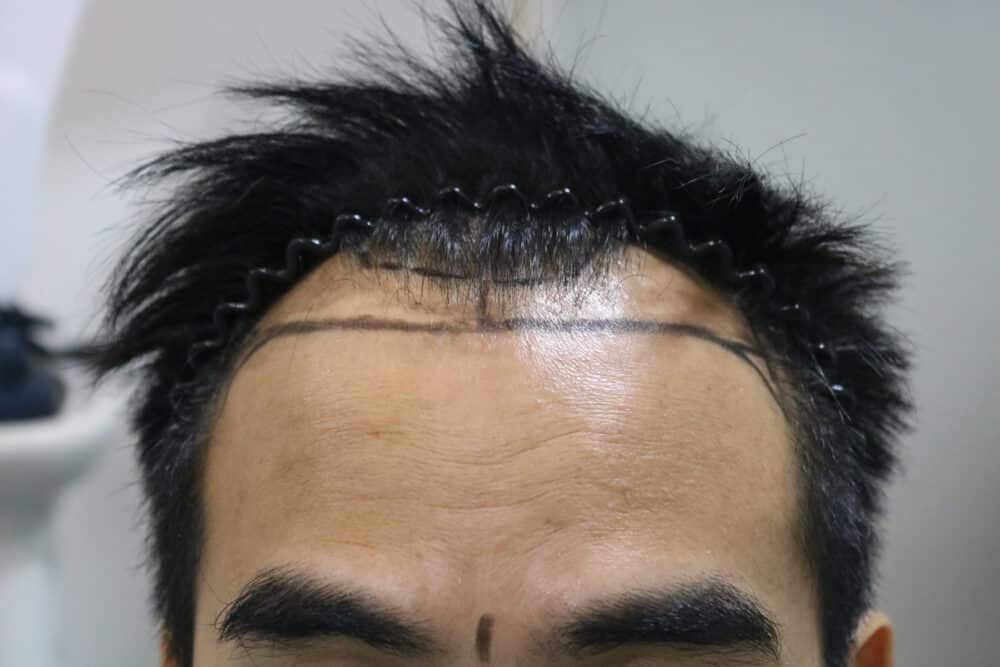
FUE hair transplantation technique or DHI hair transplantation
Nowadays, hair transplant surgery is gaining popularity, as it is a solution to hair loss problems, treating thinning hair or baldness effectively. It is a way to treat various hair problems that provide clear results in a short time. This is different from conventional hair treatment that cannot solve the hair problem to become thick, shiny and regenerating hair. At the present, there are new innovations in hair transplant surgery. Today, we will introduce a new innovation of special hair transplantation. What is FUE or DHI hair transplant technique and how is it done? Who is it suitable for? So that you can prepare before hair transplantation.


Get to know the technique of FUE hair transplantation or DHI hair transplantation
FUE (Follicular Unit Excision) is a new permanent hair transplantation surgery technique, also known as DHI hair transplantation. It is one of the hair transplantation methods that transfer the hair root transplant from the occipital area, similar to the FUT technique, to solve various hair problems such as hair loss, thinning hair and baldness. It is different from the Strip Technique, which is a traditional technique. The FUE technique uses a special tool with a very small piercing (smaller than 0.8 millimeters) to pierce the hair root cells in the occipital area without stitching, and then bring the hair root to be transplanted into the bald area. FUE hair transplantation can also transfer hair cells from other areas such as mustache, beard and chest hair to be transplanted to the head area as well.
Who is suitable for FUE hair transplantation technique / DHI hair transplantation?
- Suitable for people with thinning hair or slight baldness
- Suitable for those who like to have short hair or skinheads, as the scars are not clearly visible
- Suitable for those who have little time to recuperate, as the wound will heal faster
- Suitable for those who are afraid of pain, fear of surgery, or have high anxiety
Pros of FUE hair transplantation technique / DHI hair transplantation
Permanent FUE hair transplant surgery provides desirable results. With a seamless hair transplantation technique, without stitches, which is the highlight of this hair transplantation technique, FUE hair transplantation uses a method to extract hair follicle cells from healthy areas and plant on the desired area on the head. Therefore, there is no longitudinal stitching wound, unlike traditional hair transplantation. This hair transplant technique, therefore, requires the resolution and expertise of a specialized surgeon only. There are many other advantages that make many people choose this hair transplantation technique.
- The wound will be very small
- The wound on the back of the head healed quickly, about 1 week
- Able to keep short hair without worrying about the scar
Preparation before hair transplantation
In order for the hair transplant surgery to proceed smoothly, both during the process and the results thereafter, good self-preparation has been a huge help. Therefore, it is suggested to consult a doctor directly, as each person may have different preparation, especially in the matter of abstaining from taking medicine, certain types of supplements, or those with congenital diseases.
- Get enough sleep
- Refrain from drinking alcoholic beverages
- Refrain from drinking tea and coffee before the surgery
Procedures of FUE hair transplantation technique / DHI hair transplantation
Deep dive into the detailed FUE hair transplantation process, or the DHI hair transplantation method, by a hair transplant specialist with degrees certified by world-class hair transplant institutes with more than 5,000 cases of experience

Step 1
Get a consultation with a specialist at Grow and Glow Hair Transplant Clinic, to design and draw the hairline that will be planted to measure the area, and calculate the number of grafts used in hair transplantation.

Step 2
The next step of the FUE hair transplant technique is to shave the hair around the occipital area so that the scalp skin can be seen, in order to plan the penetration of the strong hair follicle cells in the area

Step 3
After planning and evaluating the area to be transplanted hair follicle cells. A specialist will inject a local anesthetic along the drawn scalp line and wait for the anesthetic to take effect

Step 4
When the anesthetic is effective, the doctor will start using special tools to penetrate the hair follicle cells in the occipital area by using a small pierce of 0.8 mm. for the smallest scar

Step 5
The doctor brings out the specialized tools used in the FUE hair transplant technique to collect as many healthy hair root cells as possible. This will cause a small puncture wound scattered over some head area

Step 6
Check the integrity of the hair follicle cells under a high magnification microscope before transplanting into areas with less hair follicle integrity to solve your hair problems












